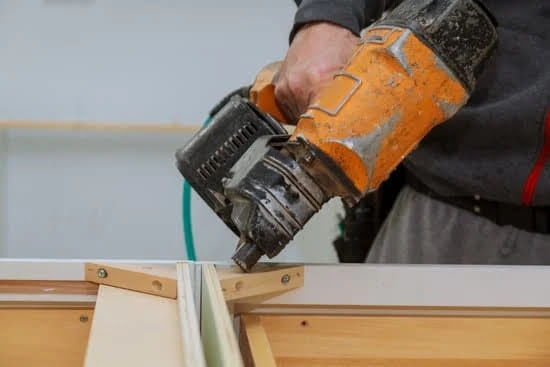Chisels are essential tools in woodworking, allowing craftsmen to shape, carve, and refine wood with precision and control. Whether you’re a beginner or an experienced woodworker, knowing how to use a chisel effectively is crucial for achieving professional-quality results. In this blog post, we will delve into the world of chisel woodworking, covering everything from the types of chisels available to advanced techniques and troubleshooting tips.
The purpose of this blog post is to provide a comprehensive guide on using a chisel for woodworking. We will start by introducing the basics of chisel woodworking and highlighting its importance in the craft. From there, we will explore the different types of chisels commonly used in woodworking and discuss their specific purposes and applications.
Choosing the right chisel for your project is also critical, so we will offer guidance on selecting the appropriate tool based on factors such as size, shape, and material. Safety precautions are paramount when working with chisels, so we will cover essential techniques and safety measures that should be followed to minimize accidents or injuries.
Finally, we will dive into sharpening and maintaining chisels for optimal performance. Additionally, we will provide step-by-step instructions for beginners on basic woodworking projects that can be completed using a chisel. For more experienced woodworkers looking to expand their skills, we’ll share advanced techniques such as carving and detailed wood shaping.
This blog post aims to equip readers with both theoretical knowledge and practical skills necessary for successful chisel woodworking projects. By following our guide from start to finish, you’ll gain confidence in creating intricate designs while enjoying the artistry of working with wood.
Types of Chisels and Their Uses in Woodworking
When it comes to woodworking, chisels are essential tools that allow craftsmen to shape and carve wood with precision. However, not all chisels are created equal, and understanding the different types and their specific uses is crucial for achieving desired results in woodworking projects. Here are the most common types of chisels used in woodworking:
- Bench Chisels: These versatile chisels are a staple in any woodworker’s toolkit. They typically have beveled edges and come in various sizes, ranging from 1/4 inch to 1-1/2 inches wide. Bench chisels can be used for a wide range of tasks such as cleaning up mortises, paring waste from joints, or even roughing out shapes.
- Mortise Chisels: Mortise chisels are specifically designed for cutting square or rectangular holes known as mortises. These chisels have thick blades to withstand the repeated pounding required when chopping out mortises. The thicker blade also prevents the chisel from twisting or bending during use.
- Carving Chisels: As the name suggests, carving chisels are used for intricate wood carving tasks. They come in various shapes such as straight gouges, bent gouges, V-parting tools, and skew chisels. Each shape serves a unique purpose when it comes to creating intricate designs or detailing.
- Firmer Chisels: Firmer chisels feature thick blades with flat sides that make them suitable for heavy-duty work such as cutting joints or removing large amounts of material quickly. These chisels are less versatile than bench chisels but excel at tasks that require more strength.
- Paring Chisels: Paring chisels have long slender blades with beveled edges that allow woodworkers to make delicate and precise cuts. These chisels are ideal for final shaping, smoothing, and cutting thin shavings.
Understanding the purpose and application of each type of chisel will help woodworkers choose the right tool for their specific woodworking tasks. Whether it’s creating intricate details or removing waste material, having the appropriate chisel on hand is crucial for achieving professional-quality results in woodworking projects.
Choosing the Right Chisel for Your Woodworking Project
When it comes to woodworking, having the right tools is essential for achieving clean and precise results. One of the most important tools in a woodworker’s arsenal is a chisel. However, with so many different types of chisels available, choosing the right one for your woodworking project can be overwhelming. In this section, we will provide guidance on selecting the appropriate chisel for different woodworking tasks and discuss factors that should be considered when making your decision.
Size is an important factor to consider when choosing a chisel. The size of the chisel you need depends on the scale of your project and the work you will be doing. Smaller chisels are ideal for delicate tasks such as carving intricate details or working on small joints, while larger chisels are better suited for heavy-duty tasks like removing material or chopping out mortises.
The shape of the chisel’s blade is another consideration to keep in mind. Beveled-edge chisels are versatile and suitable for a wide range of woodworking tasks, including general shaping and smoothing. Butt chisels have a straight edge perpendicular to the handle and are excellent for cleaning up corners or creating precise joints. Skew chisels feature a diagonal edge that allows for more controlled cuts at angles.
Material is also an important factor in determining the quality and performance of a chisel. High-carbon steel blades are known for their durability and ability to hold an edge well, making them popular among woodworkers. However, they may require more frequent sharpening compared to other materials such as stainless steel or laminated blades.
Factors to Consider When Choosing a Chisel
| Factor | Description |
|---|---|
| Size | Determines the scale of your project and the type of work you will be doing. |
| Shape | Affects the versatility and precision of the chisel’s performance. |
| Material | Determines the durability and sharpness retention of the chisel’s blade. |
By considering these factors, you can choose a chisel that is best suited for your woodworking project. It is also worth investing in quality chisels from reputable brands, as they are likely to be more durable and provide better performance compared to cheaper alternatives. Remember, having the right chisel can significantly impact your woodworking experience and the quality of your finished pieces.
Essential Chisel Woodworking Techniques and Safety Precautions
Woodworking with a chisel requires mastering a variety of techniques to achieve clean and precise cuts. Additionally, it is vital to prioritize safety when using a chisel, as accidents can occur without proper precautions. In this section, we will explore the essential chisel woodworking techniques and safety measures that every woodworker should be aware of.
Chisel Woodworking Techniques
When using a chisel for woodworking, it is important to employ proper techniques to ensure accurate and effective results. Here are some essential techniques to keep in mind:
- Gripping the Chisel: Proper grip is crucial for control and accuracy when using a chisel. Place your dominant hand near the end of the handle while firmly supporting the blade with your non-dominant hand closer to the cutting edge.
- Positioning the Chisel: Positioning the chisel at the desired angle is necessary for achieving clean cuts. For most tasks, hold the chisel at a slight angle (around 20-30 degrees) to create a bevel on one side of the workpiece.
- Striking Techniques: Chisels are typically struck with a mallet or hammer to make cuts. Use controlled and precise strikes rather than swinging forcefully, as this can damage both the tool and workpiece.
- Removing Waste Material: To remove waste material from your workpiece, apply steady pressure while pushing or tapping on the chisel’s handle with a mallet. Take your time and make multiple light passes rather than trying to remove all material at once.
Safety Precautions
Respecting safety protocols is essential in any woodworking project, including those involving chisels. Here are some key safety precautions for chisel woodworking:
- Eye Protection: Always wear safety goggles or glasses to protect your eyes from flying debris or wood chips that may result from chiseling.
- Workbench Stability: Ensure your workpiece is securely held in place on a stable workbench or clamped down to prevent it from slipping or moving unexpectedly during chiseling.
- Hand Placement: Keep your non-dominant hand well away from the cutting edge of the chisel at all times.
- Sharpness and Control: Use sharp chisels to minimize the risk of slips or uneven cuts. A dull chisel requires more force, increasing the likelihood of accidents. Additionally, maintain control over the chisel by keeping a firm grip and working at a pace that allows for better precision.
- Chisel Orientation: Avoid pointing the sharp end of the chisel towards yourself or others when not in use. Always place it in a secure location when setting it down.
By mastering these essential techniques and adhering to safety precautions, woodworkers can ensure both quality craftsmanship and personal protection while using a chisel for woodworking projects.
Proper Sharpening and Maintenance of Chisels
One of the most important aspects of using a chisel for woodworking is keeping it sharp. A sharp chisel not only allows for more precise and efficient cuts, but it can also help prevent accidents or injuries caused by a dull or damaged blade. In this section, we will discuss the importance of sharpening and maintaining chisels effectively.
To begin, let’s talk about the tools needed for sharpening a chisel. The primary tool you’ll need is a sharpening stone or whetstone. These are available in various grits, ranging from coarse to fine. Coarse stones are used to repair or reshape the bevel of the chisel, while finer stones are used for honing and polishing the edge.
When sharpening a chisel, it’s crucial to start with the coarsest grit stone and work your way up to finer grits. Begin by placing the chisel flat on the stone and gradually tilt it up until you reach your desired bevel angle. Using steady pressure and consistent strokes, move the chisel back and forth across the stone in a smooth motion. Be sure to maintain an even contact between the blade and stone throughout the process.
After sharpening with coarse grits, move on to finer stones to refine and polish the edge further. As you progress through different grits, make sure to remove any burrs that may form along the blade’s edge during sharpening. A burr can be removed by lightly running the flat side of another object (like a hard rubber block) along both sides of the blade until it feels smooth.
In addition to regular sharpening, proper maintenance of chisels is essential for their longevity. After each use, clean your chisels thoroughly by removing any wood debris or sawdust from their handles and blades. This can be done using a brush or cloth dampened with a mild solvent or water. Once cleaned, dry your chisels completely to prevent any moisture from causing rust or corrosion.
To further protect your chisels, consider investing in blade guards or protective sleeves. These accessories will help keep the blades covered and secure when not in use, preventing accidental damage and ensuring they remain sharp for longer periods.
By consistently sharpening and maintaining your chisels, you’ll maximize their performance and extend their lifespan. A well-sharpened chisel is a powerful woodworking tool that can provide clean and precise cuts for all your projects. So remember to keep those edges sharp and take care of your chisels, and you’ll be ready to tackle any woodworking task with confidence.
Basic Chisel Woodworking Projects for Beginners
Introduction to Basic Chisel Woodworking Projects
One of the best ways for beginners to practice their chisel woodworking skills is by starting with simple projects. These projects are not only great opportunities to learn and develop basic techniques, but they also allow beginners to create beautiful and functional pieces right from the start. In this section, we will explore a few basic chisel woodworking projects that are perfect for beginners.
Wooden Spoon Carving
Carving a wooden spoon is a classic project that can be accomplished using just a few essential chisels. Begin by selecting a suitable piece of wood, such as a softwood like pine or birch. Draw the outline of your spoon onto the wood and use a coping saw or bandsaw to rough cut the shape.
Once you have your rough shape, secure it in place with clamps and use a bench chisel to remove excess material from the handle area. Gradually refine the shape of the spoon using gouges and smaller chisels, paying close attention to ergonomics and functionality. Finish the spoon with sandpaper and food-safe oil or wax for a beautiful finished product.
Basic Box Joint Box
Creating a simple box joint box is another excellent project for beginners to practice their chisel woodworking skills. Start by cutting identical pieces of wood that will serve as the sides of your box. To make box joints, mark out and cut slots on each piece using a saw before cleaning up the joints with paring or bench chisels.
Once you have created all four sides with matching box joints, assemble them together using glue and clamps. Secure any loose corners with small nails or screws if necessary. Finish the box by sanding all surfaces until smooth and applying your choice of finish, such as stain or paint.
These basic chisel woodworking projects provide an excellent starting point for beginners to practice and refine their skills. From spoon carving to box joint boxes, these projects allow beginners to develop fundamental techniques while producing functional and aesthetically pleasing pieces of work. With practice and dedication, beginners can gradually advance to more complex projects with a solid foundation in chisel woodworking techniques.
Advanced Chisel Woodworking Techniques
Once you have mastered the basic techniques of using a chisel in woodworking, you may be ready to explore more advanced applications. In this section, we will introduce some advanced chisel woodworking techniques that are commonly used by experienced woodworkers. These techniques will allow you to take your woodworking skills to the next level and create intricate and detailed woodwork.
One advanced technique is carving, which involves using a chisel to shape and sculpt wood to create decorative designs or figures. Carving can range from simple patterns to intricate and lifelike sculptures. It requires precision and control over the chisel, as well as an artistic eye for detail. There are various styles of carving, including relief carving (where designs are raised from the surface) and chip carving (where triangular chips are removed to create patterns).
Another advanced technique is creating mortise and tenon joints, which are used to join two pieces of wood together at right angles. This technique is often used in furniture making, as it creates strong and durable connections between different components of a piece. To create a mortise and tenon joint with a chisel, you will need to skillfully remove material from both pieces of wood until they fit together tightly.
Detailed wood shaping is another advanced skill that can be achieved with a chisel. This technique involves using the chisel to refine curved or intricate surfaces on a piece of wood. By carefully removing small amounts of material at a time, you can shape the wood according to your desired design or form.
As with any advanced woodworking technique, it is important to practice these skills on scrap or less valuable pieces of wood before attempting them on your actual project. Remember to take your time and work slowly and steadily when executing these techniques with a chisel.
By expanding your knowledge of advanced chisel woodworking techniques such as carving, creating mortise and tenon joints, and detailed shaping, you will be able to elevate the quality and craftsmanship of your woodworking projects. These techniques require patience, skill, and precision, but with practice and dedication, you can achieve stunning and intricate results.
Troubleshooting Tips for Chisel Woodworking Issues
Common Challenges in Chisel Woodworking
Chisel woodworking, like any craft, comes with its own set of challenges. Whether you’re a beginner or an experienced woodworker, it’s important to be aware of the common issues that can arise and how to troubleshoot them. Understanding these challenges and their solutions will help you overcome any obstacles that may arise during your woodworking projects.
One common challenge in chisel woodworking is achieving clean and precise cuts. Uneven cutting can result from a variety of factors such as inadequate sharpening, incorrect angle of the chisel, or poor technique. To overcome this issue, ensure that your chisel is properly sharpened before starting each project and maintain a consistent angle while making cuts. Additionally, practicing proper hand positioning and applying steady pressure will help you achieve cleaner and more accurate cuts.
Another challenge woodworkers often face is the occurrence of splintering or tear-out while using a chisel. This can be especially frustrating when working with delicate or brittle woods. To reduce the likelihood of splintering, always work along the grain of the wood and make shallow cuts rather than deep ones. Using a backer board underneath the workpiece can also provide support and minimize tear-out.
Troubleshooting Solutions
When encountering issues in chisel woodworking, there are several troubleshooting techniques you can employ to improve your results:
- Sharpen Your Chisels: Dull chisels can lead to less control and messier results. Regularly sharpen your chisels to ensure they are in optimal condition for clean cuts.
- Check Your Technique: Pay attention to your hand placement, apply consistent pressure, and maintain a steady angle throughout your cuts. Proper technique is crucial for achieving accurate results.
- Experiment with Different Angles: If you’re experiencing difficulties such as excessive splitting or rough edges, try adjusting the angle at which you hold your chisel. Sometimes a slight alteration can make a significant difference in the outcome.
- Use the Right Chisel for the Job: Ensure that you are using the appropriate type and size of chisel for your specific woodworking task. Using a chisel that is too small or too large can lead to undesirable results.
- Practice Patience: Woodworking requires patience and practice. If you encounter challenges, take a step back, assess the situation, and approach it with a calm and focused mindset. With time and experience, you will become more adept at troubleshooting and achieving desired results.
By being aware of these common challenges and employing the appropriate troubleshooting techniques, you’ll be better equipped to handle any issues that arise during your chisel woodworking projects. Remember that perseverance and continuous learning are key to mastering this craft. Keep experimenting, honing your skills, and most importantly, enjoy the process.
Recommended Tools and Accessories for Chisel Woodworking
Having the right tools and accessories is essential for successful chisel woodworking projects. While a chisel is the main tool used in this craft, there are several other items that can enhance the woodworking experience and ensure precision and efficiency. In this section, we will explore some recommended tools and accessories that every chisel woodworker should consider adding to their arsenal.
- Sharpening Stones: Keeping your chisels sharp is crucial for clean cuts and smooth finishes. Invest in high-quality sharpening stones to maintain the sharpness of your chisels. There are different types of sharpening stones available, such as oil stones, water stones, and diamond stones. Choose one that suits your needs and follow proper sharpening techniques to ensure optimum performance of your chisels.
- Honing Guide: A honing guide is a handy accessory that helps maintain consistent angles while sharpening your chisels. It holds the blade securely at the desired angle, allowing you to achieve accurate bevels consistently.
- Mallet or Hammer: While hand pressure can be used with smaller chisels, larger chisels require more force for effective cutting or carving. A wooden mallet or a rubber-headed hammer provides the necessary impact without damaging the handle of the chisel.
- Bench Chisels Set: Investing in a good set of bench chisels is ideal for versatility in woodworking projects. Look for sets that include different sizes ranging from 1/8 inch to 1 inch, as well as different types of bevel-edged and mortise-style bench chisels.
- Marking Tools: Accurate measuring and marking are essential in woodworking. Consider using marking tools such as marking gauges, combination squares, or layout knives to ensure precise measurements and marking lines before using your chisel.
- Workbench or Vise: Having a sturdy workbench or vise is crucial for securing your workpiece while chiseling. This ensures stability and reduces the risk of accidents or injuries. Look for a workbench or vise with adjustable clamps that can accommodate different sizes of wood.
Remember, investing in quality tools and accessories not only enhances your woodworking experience but also ensures safety and precision in your chisel woodworking projects. Choose reliable brands and products that have a good reputation in the woodworking industry, ensuring longevity and performance of your tools. By having the right tools at hand, you will be well-equipped to tackle any chisel woodworking project with confidence and efficiency.
Conclusion
In conclusion, mastering the art of chisel woodworking requires a combination of knowledge, skill, and practice. Throughout this blog post, we have covered the basics of chisel woodworking, including the types of chisels commonly used and how to choose the right one for your project. We have also discussed essential techniques and safety precautions to ensure a successful and safe woodworking experience.
One crucial aspect of chisel woodworking is proper sharpening and maintenance of chisels. Keeping your chisels sharp is essential for efficient and precise woodworking. We have provided step-by-step instructions on how to sharpen and maintain your chisels effectively, allowing you to work with clean edges that provide better control over your woodwork.
For beginners looking to get started with chisel woodworking projects, we have presented some simple yet rewarding projects that can be completed using a chisel. With detailed instructions, tips, and tricks for each project, beginners can gain confidence in their skills while creating beautiful pieces.
For experienced woodworkers seeking to advance their techniques, we have explored more complex applications such as carving, mortise and tenon joints, and detailed wood shaping. These advanced techniques push the boundaries of what can be accomplished with a chisel and provide opportunities for creating intricate designs.
Remember that troubleshooting issues are an inevitable part of any woodworking journey. We have provided practical solutions and tips for overcoming common challenges encountered during chisel woodworking. By familiarizing yourself with these troubleshooting strategies, you can tackle any problem that arises with confidence.
Lastly, we recommend investing in additional tools and accessories that can enhance your chisel woodworking experience. Quality tools from reputable brands make a significant difference in the quality of your workmanship and can make tasks easier and more enjoyable.
With all this knowledge at hand, we encourage you to apply what you’ve learned in your future woodworking projects. Whether you are just starting or have years of experience under your belt, there is always room for growth and improvement. By honing your skills and experimenting with new techniques, you can truly master the art of chisel woodworking and create stunning pieces that showcase your craftsmanship.

Hi everyone! I’m a woodworker and blogger, and this is my woodworking blog. In my blog, I share tips and tricks for woodworkers of all skill levels, as well as project ideas that you can try yourself.





